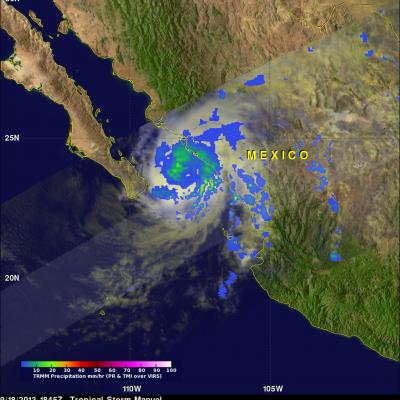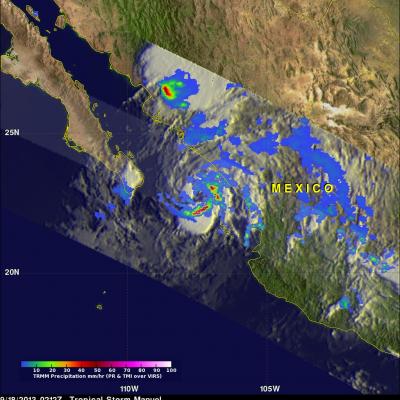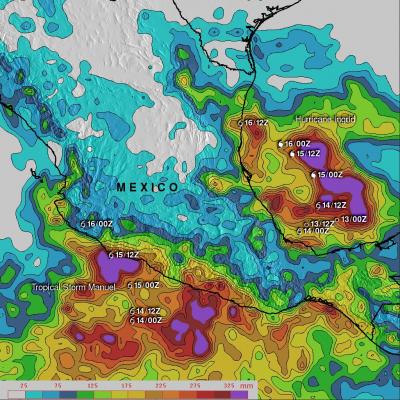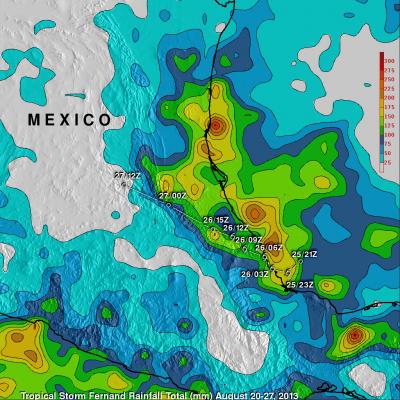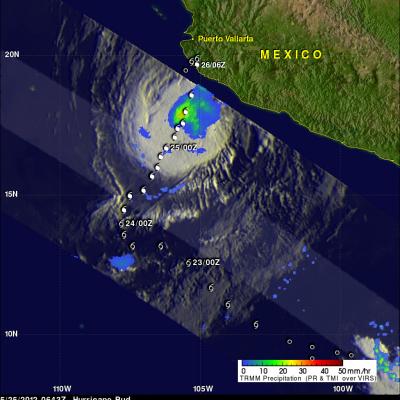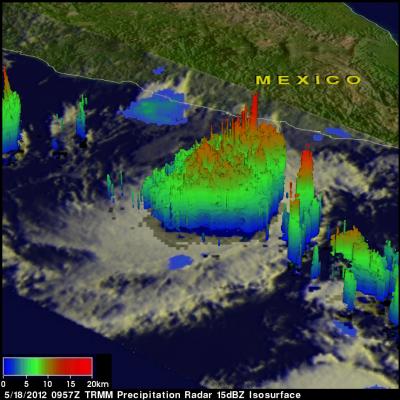Deadly Manuel Becomes A Hurricane
As predicted by the National Hurricane Center (NHC), tropical storm Manuel became a category one hurricane yesterday evening. Manuel, located over the southern Gulf Of California, was an intensifying tropical storm with maximum wind speeds of about 50kts (~57.5 mph) when viewed by the TRMM satellite on September 18, 2013 at 1845 UTC. Manuel had intensified and was a minimal hurricane, hugging Mexico's coast, with wind speeds of about 65kts (~75.8 mph) when seen again by TRMM on September 19, 2013 at 0116 UTC. Rainfall analyses that used TRMM's Microwave Imager (TMI) and Precipitation Radar (PR


